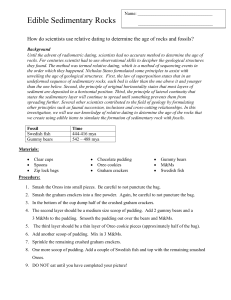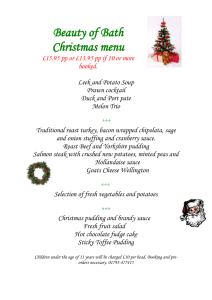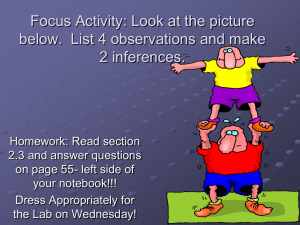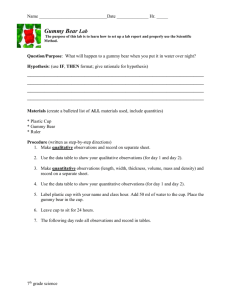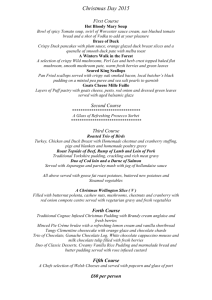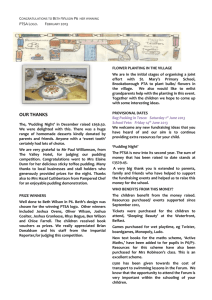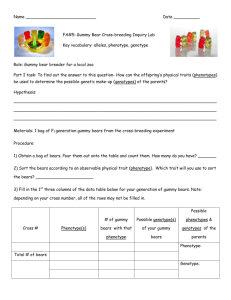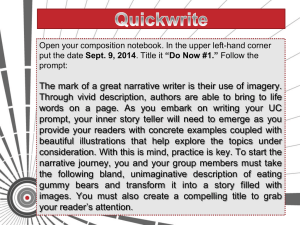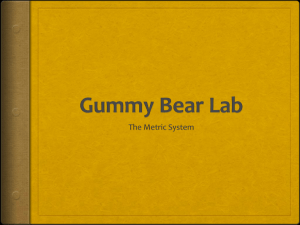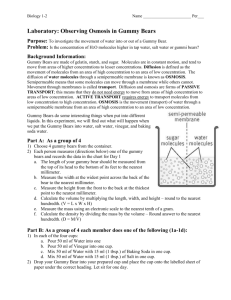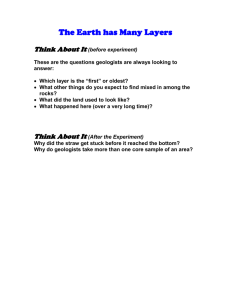Mouthwatering Mixtures and Confectionery Compounds
advertisement
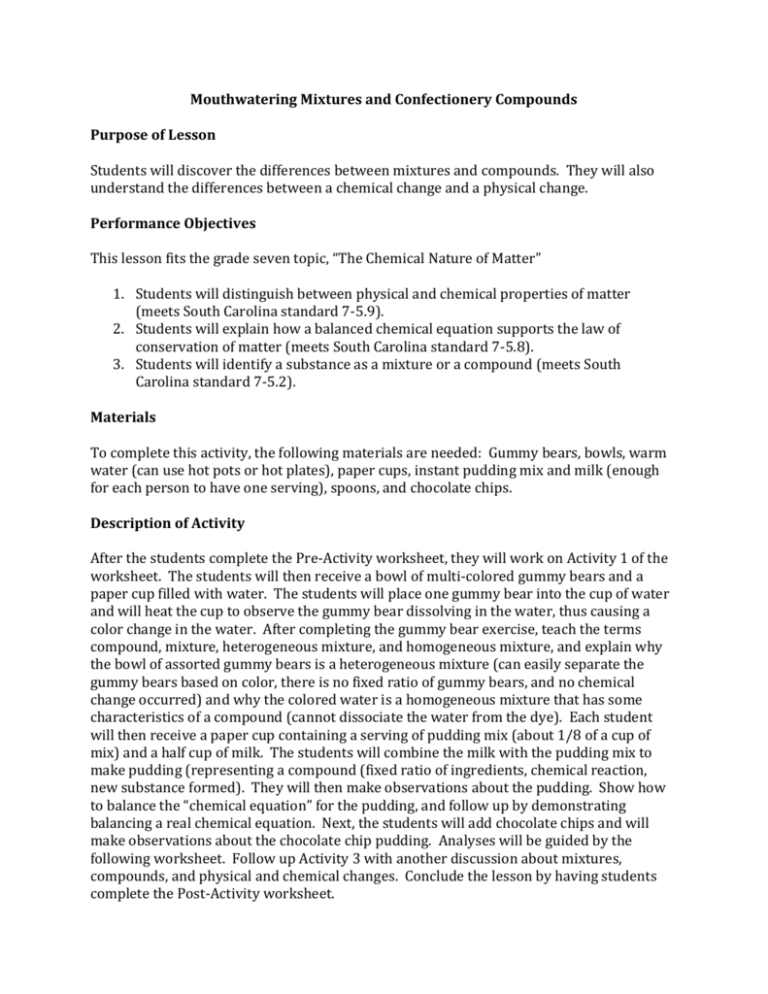
Mouthwatering Mixtures and Confectionery Compounds Purpose of Lesson Students will discover the differences between mixtures and compounds. They will also understand the differences between a chemical change and a physical change. Performance Objectives This lesson fits the grade seven topic, “The Chemical Nature of Matter” 1. Students will distinguish between physical and chemical properties of matter (meets South Carolina standard 7-5.9). 2. Students will explain how a balanced chemical equation supports the law of conservation of matter (meets South Carolina standard 7-5.8). 3. Students will identify a substance as a mixture or a compound (meets South Carolina standard 7-5.2). Materials To complete this activity, the following materials are needed: Gummy bears, bowls, warm water (can use hot pots or hot plates), paper cups, instant pudding mix and milk (enough for each person to have one serving), spoons, and chocolate chips. Description of Activity After the students complete the Pre-Activity worksheet, they will work on Activity 1 of the worksheet. The students will then receive a bowl of multi-colored gummy bears and a paper cup filled with water. The students will place one gummy bear into the cup of water and will heat the cup to observe the gummy bear dissolving in the water, thus causing a color change in the water. After completing the gummy bear exercise, teach the terms compound, mixture, heterogeneous mixture, and homogeneous mixture, and explain why the bowl of assorted gummy bears is a heterogeneous mixture (can easily separate the gummy bears based on color, there is no fixed ratio of gummy bears, and no chemical change occurred) and why the colored water is a homogeneous mixture that has some characteristics of a compound (cannot dissociate the water from the dye). Each student will then receive a paper cup containing a serving of pudding mix (about 1/8 of a cup of mix) and a half cup of milk. The students will combine the milk with the pudding mix to make pudding (representing a compound (fixed ratio of ingredients, chemical reaction, new substance formed). They will then make observations about the pudding. Show how to balance the “chemical equation” for the pudding, and follow up by demonstrating balancing a real chemical equation. Next, the students will add chocolate chips and will make observations about the chocolate chip pudding. Analyses will be guided by the following worksheet. Follow up Activity 3 with another discussion about mixtures, compounds, and physical and chemical changes. Conclude the lesson by having students complete the Post-Activity worksheet. Name:______________________________ Activity 1: Melting Ice 1. Imagine you melt an ice cube into water. 2. If you placed this water in the freezer, would it turn back into ice? Activity 2: Gummy Bears 1. Is it possible separate the gummy bears in the bowl based on color? 2. Have the gummy bears in the bowl combined to form a new substance, or are they simply a group of differently colored gummy bears hanging out in one bowl? 3. Place one gummy bear into the cup of water. Heat and swirl the water for 1 minute. 4. What do you observe about the water? 5. Can you change the water color back to clear? Activity 3: Pudding 1. Add the milk to the pudding mix and stir for 5 minutes to form pudding. 2. Is it possible to convert the pudding back into milk and pudding mix? 3. Is the pudding a compound or a mixture? 4. To make one molecule of pudding (Mx1Mk2), we need 1 molecule of mix (Mx) and 2 molecules of milk (Mk). Complete the equation below by adding the number of each molecule in the blanks: _____ Mx + _____ Mk 1 Mx1Mk2 5. Add some chocolate chips to the pudding. 6. Is it possible to separate the chocolate chips from the pudding? 7. Is the chocolate chip pudding a compound or a mixture?
